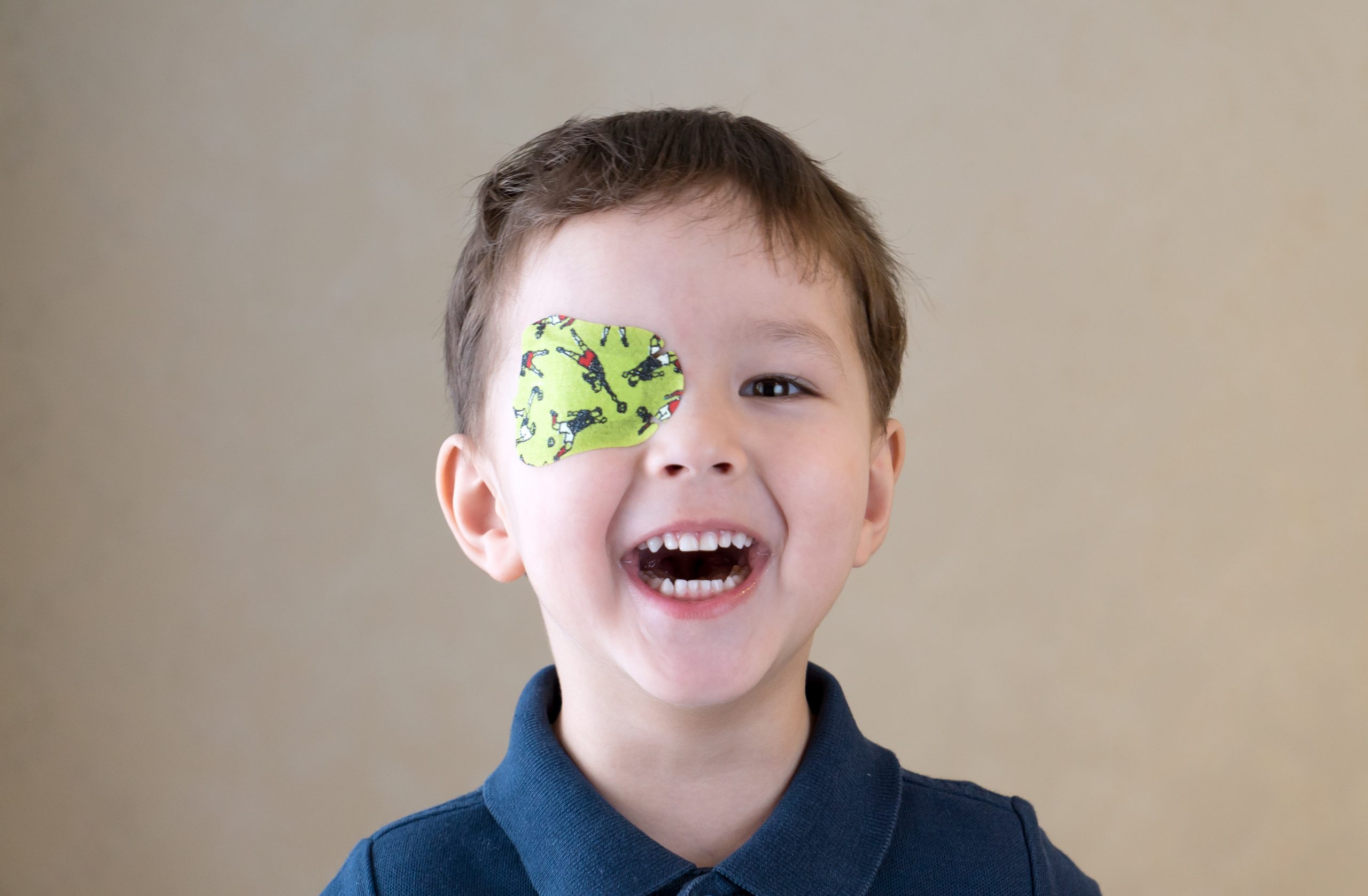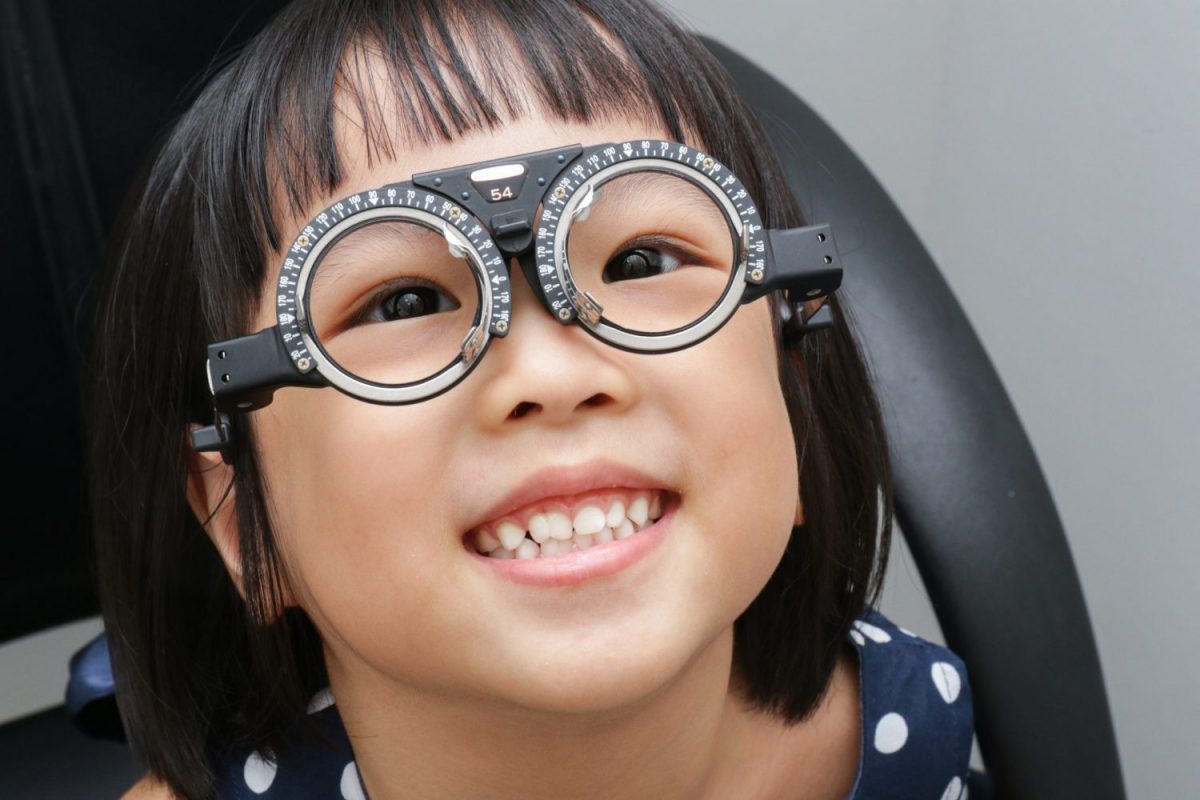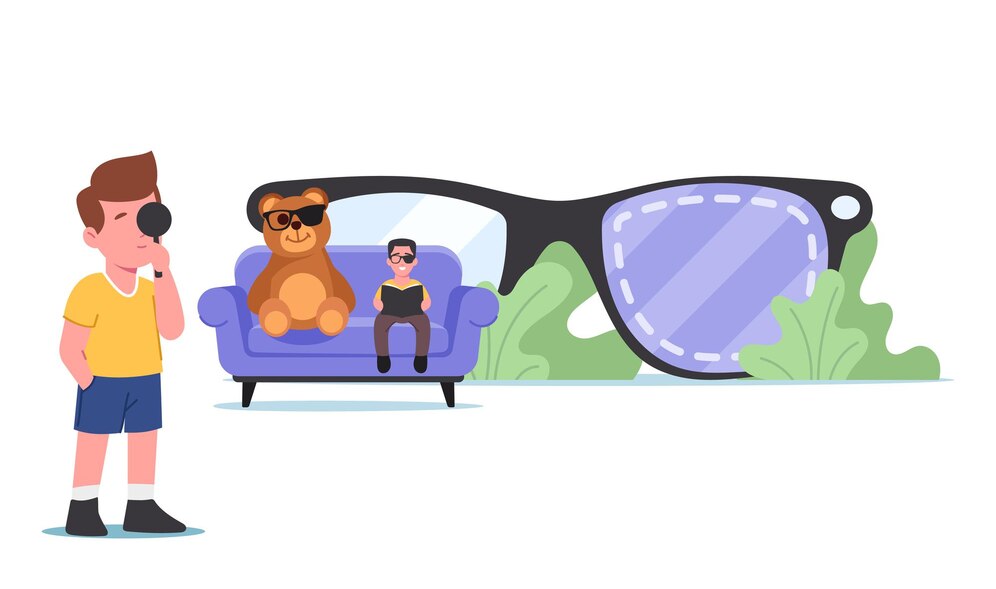Since 2019, COVID-19 has become a pandemic around the globe with everyone being forced to stay home. Although the government health centers used to provide vision screening for four-year-old kids, the exercise has been suspended due to the pandemic. As optometrists, we realize that many children with amblyopia are missing the chances of being treated. So how can parents know if their children have any vision problems?
What is amblyopia?
About 5% of children within the age three to six have amblyopia. Amblyopia is a congenital condition which is mainly caused by a huge deviation in the degree of refractive errors between both eyes and possibly by misaligned eyes. It causes difficulties in receiving clear images during visual development, affecting the development of the visual cortex in children’s brain. Their vision cannot be corrected even when wearing glasses.
As amblyopia is a congenital condition, children are often unable to tell the difference between a clear and a blurry vision. Only by early diagnosis, can amblyopia be treated and prevented in time.
How can amblyopia be treated?
Patients with severe astigmatism and farsightedness are usually advised to get a pair of glasses with the right prescription as soon as possible. By wearing them for a long period of time, it helps stimulate the visual cortex of the brain and vision will greatly be improved after 3 months of treatment. Patients should also pay attention to the post-treatment care. Even after recovering from amblyopia, children should wear their glasses at all the time to prevent vision regression.
What can I do for my children if they cannot fully recover from amblyopia after wearing corrective spectacles?
If amblyopia cannot be fully cured, the use of medical eye patches may help. The use of eye patches helps reduce the reliance on the eye with normal vision, forcing the patient to utilize their weaker eye and help develop its vision. This treatment method seems to be simple yet requires advanced knowledge in optometry. The time required for putting on an eye patch depends on the patient’s visual condition. Children with mild amblyopia are usually required to wear an eye patch for 2 hours. However, optometrists may adjust the duration depending on the recovery progress. Wearing eye patches for too long may cause deterioration in eyesight, making the condition worse.
In some complicated amblyopia cases, such as strabismus (meaning that the eyes do not properly align with each other), optometrists will help assess children’s development of eye coordination. Visual training and referral for surgery may also be arranged whenever necessary.

Wearing eye patches may seem to be a simple treatment, but you should always follow your optometrists’ suggestion. (Image source: Adobe Stock)
The pandemic’s effect on amblyopia
As vision screening has been suspended in Hong Kong, it can be difficult for parents to identify visual problems in their kids. Amblyopia can only be effectively cured if problems are to be identified in a treatable stage and by following up closely. If amblyopia is to be diagnosed after the age of 8 to 9, it may cause irreversible and permanent damage to children’s vision, affecting their studies and daily lives.
Hence, as the pandemic has subsided from its peak, parents are advised to bring their children to undergo vision screening with their optometrists before school starts. Let’s help our children succeed at school in top conditions!
Other Posts:
 【Anecdotes about the History of Orthokeratology】Tracking Back to the Origin of Orthokeratology Has T...
【Anecdotes about the History of Orthokeratology】Tracking Back to the Origin of Orthokeratology Has T...
What is Ortho-K? In recent years, I believe that ... 【Guidelines for Nearsightedness Prescription】3 Myths about Filling a Prescription and 5 Major Sympto...
【Guidelines for Nearsightedness Prescription】3 Myths about Filling a Prescription and 5 Major Sympto...
Nowadays, children never part with their mobile ph...
